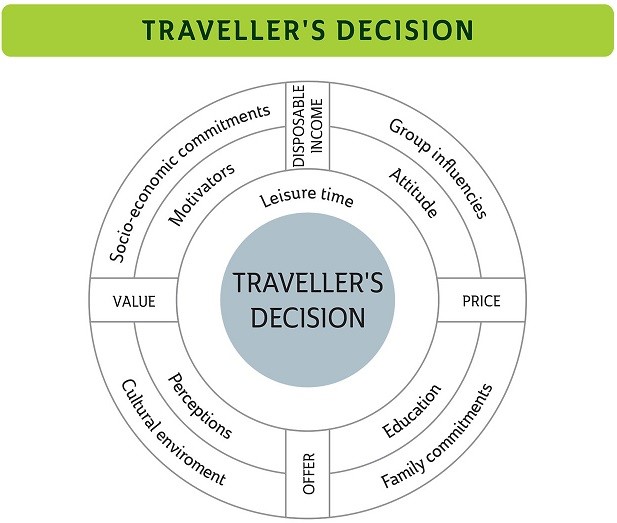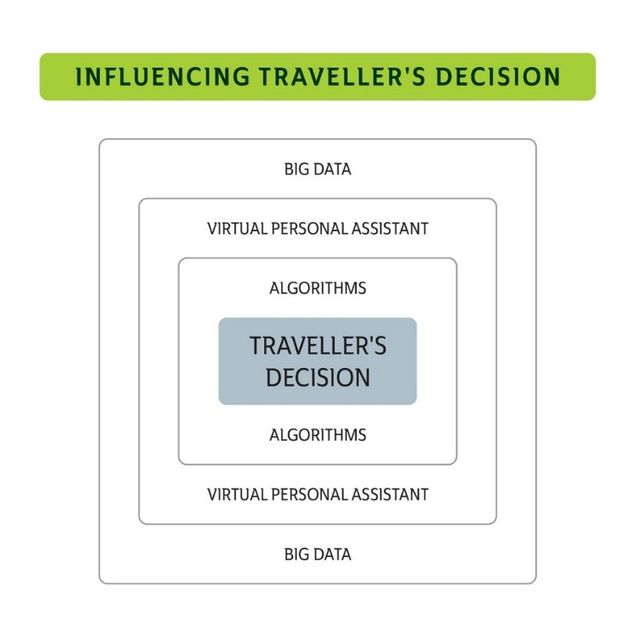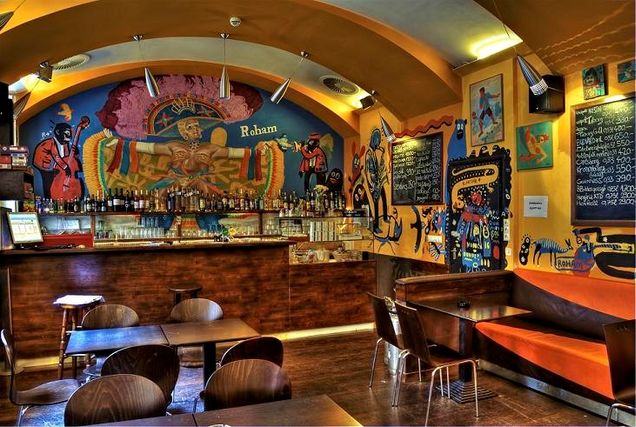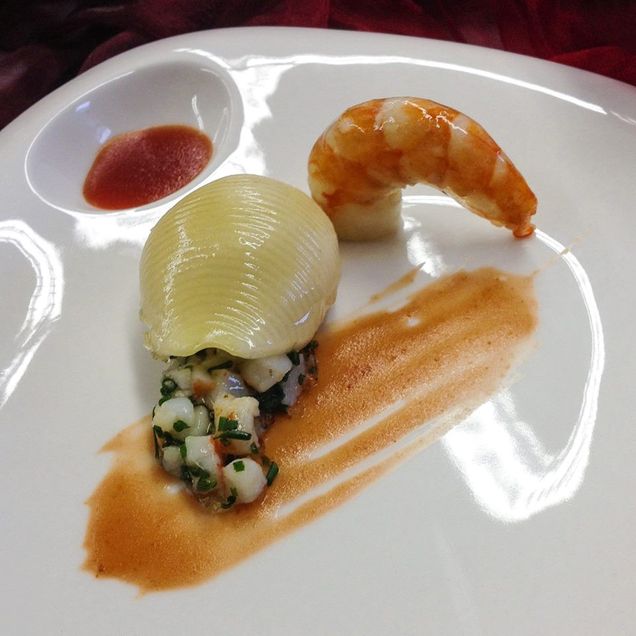How Hotels Are Usining Experiential Digital Art Installations as a Marketing Tool
The Digital Time to come of the Tourism & Hospitality Manufacture

By Martin Zsarnoczky
Digitalization is amongst the most important changes in our quickly evolving world. Digital innovations and technological novelties are engines of development and show their touch on everywhere, specially in the field of manufacturing, ICT and other service industries. Given the fact that tourism is based on the cooperation between a wide range of services and products, the benefits of the digital revolution in the sector are quite obvious.
Our living environs is a combination of online and offline spaces that co-exist together, defining our everyday habitat. In tourism, the special utilize of spaces has always been a unique feature of the industry, and every bit of today, the spaces of the digital world take get part of information technology. The rapid evolution of the digital world brings novel and innovative solutions into the digital tourism spaces by the 24-hour interval. Peer-to-peer communication is outstandingly of import in the technological environment of tourism. This type of advice, together with the spreading of smart devices accept revolutionized scheduling, administration and finances, and also opened new horizons for the introduction of innovative sales and marketing technologies in the whole tourism manufacture. As a result of the digital revolution, the international development trends in tourism have opened the mode for novel solutions like cloud-based booking sites or data and experience sharing via digital platforms.
In line with the new trends of travelling, there is a dynamically growing demand for special tailor-fabricated offers across mass tourism, as conscious consumers expect personalized solutions that reply their private needs. Equally of today, the vast majority of tourism marketplace stakeholders have access to detailed information on their consumers and can closely follow and track consumer behavior and its changes. These novel systems of personalized products and services are available thanks to various flexible follow-up techniques like CRM client databases. The cloud-based CRM client database systems – ones that create offers by analyzing previous sales records and demographic data – have evolved rapidly. As of today, they can analyze huge datasets by big data assay and scaling methods in a cost effective and anonymous style, searching for significant event points. Although big information inquiry is based on working with big samples, it is the most efficient method to reveal individual personal preferences (Stadler, 2015).
How did sharing economy pave the way to personalized tourism services?
In previous decades, the results of digital development accept opened the door for the real life implementation of shared economy theories. It was almost ten years agone that Chris Anderson (2009) introduced his pricing theory in digitalization, basically suggesting giving away products for costless, based on the principle of shared goods and resources. Although at the fourth dimension Anderson'south theory was considered every bit a technological solution, the principle of digital sharing accept induced serious social changes every bit well. I of the nearly of import positive messages of shared economic system is the maximum use of resource capacities for the purpose of social well-existence (Sundararajan, 2014). Social well-being is besides a key priority in tourism, considering a well-managed tourism industry brings profit not merely for the business operators but also for the local communities.
In the sharing economic system model, the stakeholders – who are as well consumers at the same time – offering their excess capacities for collective use in club to maximize the exploitation of their appurtenances and resources. These economical processes consist of so-called hybrid transactions with maximum chapters use (Hyde, 2007), for both commercial and social purposes. An important drive in the evolution of collaborative consumption theory was the realization of the fact that using or possessing the aforementioned consumer goods can effect in unlike advantages. The core element of the model is that sellers offering their excess capacities, while the consumers in need use them in return for payment. In the sharing economy (based on the aforementioned primary idea), more and more industrial, commercial and service providers offering innovative solutions.
The principle of sharing is not a new idea in the tourism industry. In the case of some accommodation services, seasonal price reduction has ever been a practise. Hostels and youth hotels have e'er been popular – these facilities are often used as dormitories throughout the academic year and charter their rooms for backpackers in the summer season, when the students are away. Of course, these seasonal options would not have been plenty for creating a new market sector; the dawn of the new business concern era was marked with the emergence of wide platform solutions like Airbnb, Booking.com, Agoda, etc.

In the strategy of digital platform tourism businesses, consumers are considered as partners in the business activities. This shared operation can exist best defined equally a postmodern business model. Although the circuitous idea of postmodernism is quite difficult to draw, its main characteristics – shared participation and the subjective passion of each contributor – can lead closer to understand the phenomenon. Information technology is clear that postmodernism volition change some processes of the classic market laws in the nearly future. While "shared experience" has go a key marketing term for selling goods and services, specialized offers inevitably lead to a market fragmentation that will outcome in the fragmentation of users also. In a disintegrated market, consumers will behave differently in fragmented times and spaces, paving the way for personalized services and tailor-made solutions. At the same time, individualism has become the central characteristics of the younger generations (McCrindle et al., 2009); a miracle that will have to be taken into account whilst creating business organization strategies. Due to the emergence of individualism, more than and more than young people are trying to create something unique that tin can serve the long-term benefit of the community. Their drive for creating businesses based on their own ideas and experience accounts for the increasing popularity of start-up businesses. These aspects of uniqueness, community thinking and experience-centered approach hold a huge opportunity for the hereafter of the tourism industry.
The Future: AI, VR/AR, Blockchain
While looking through their photos, tourists ordinarily have a positive experience remembering their travels, experiences and the destination they had visited. Some specialized digital technologies can offer this assumed positive experience in a searchable and child-bearing course. With regards to real life objects, their connections and relations, there is only a limited amount of data available in a format that could exist handled by computers. The primary problem is that computers need sufficient coding solutions created by artificial intelligence to exist able to store, handle and organize information. The methods of coding for tourism experience purposes impact the speed, efficiency and knowledge/experience-based computing abilities of today's computers.
According to the forecasts of production development strategies in various industries, almost all of our everyday objects and equipment will be attainable through the internet in the future. As a consequence, all devices that are capable of two-way advice will belong in the framework of IoT (Internet of Things). The devices of the future, unlike the devices of today, volition communicate in a bidirectional way, where robust safe data handling, personalized differentiation and sufficient determination management will be function of the user experience. Equally a result of the continuous data collection during the employ of these devices, all relevant information will eventually end upwards in a terminal centralized system at the top of the dataset.
Previously, tourism used to be an industry based on personal relations and connections, where the trends – and therefore travelers' decisions – were gear up out by a express number of large international tourism and travel enterprises. Every bit a result of the digital revolution, the transparency of "hidden markets" had been revealed and numerous other factors have to be taken into account (Fig.1.).

The early development of ICT resulted not merely in the better chapters utilization of airlines, but also on the compatibility of the prices; and soon, the emergence of the discount airlines had led to the innovation of the whole industry and forced out efficiency in all segments. The novel travel recommendation sites (Expedia, Orbitz, Kayak, etc.) were created with the aim to make travelers' decisions easier; yet at the same time, a lot of tourism service providers who could not keep up with the new challenges were forced out of the market place. Although the new trends like travel packages (including car rental) or taking into account the reviews of previous travelers (Lonely Planet) were from many aspects reverse to the one-time business models, the chop-chop increasing popularity of online offers required quick and user-friendly tourism product development from the industry.
With the arrival of Google, which was able to rank the sites' appearance in cyberspace searches, a fierce competition begun between blogs, tourism recommendation sites and price-comparing OTA systems. The bidirectional communication started with the use of cookies 2.0; since then, consumers accept become an integral part of the business models, because businesses who seek to be successful in the long run, demand to know their customers' demands in item. The development of digital services require the identification of the user, data on their individual preferences and a decision-based scale (by AI). In AI-based decision making solutions, the one-time decisive factors are replaced by a virtual personal assistant, which is able to map the consumer'south preferences based on their digital footprint, and create an optimal personalized offer from the available large data systems (Fig. ii.)

The technological development cannot be stopped; however, with sufficient flexibility and openness, tourism businesses tin can prepare for the upcoming challenges. In the tourism of the time to come, the new consumers will bring forth new priorities and new demands. As a revolutionary approach, the members of the IoP (Internet of People) community offer their costless time in society to reach articulation It/industrial goals, where frameworks are created in line with the preferences of other people, for a yet not specified consumer segment (Miranda et al., 2015). Beyond innovative technologies, whole new spaces accept opened in tourism, completely different from the usual destinations. Academy researchers[i] have been carried out to written report the possibilities of online tourism spaces and their opportunities for the tourism and hospitality industry. In virtual reality, with a special "drinking glass", the user tin can look into an optional tourism space, from which the real world is completely close out. The Augmented reality is a dissimilar technological solution, where digital elements are projected into a real life infinite.

The newest technological developments and the innovation in the use of living spaces are all continued to the alternative payment options that tin exist used in tourism also. The emergence of Bitcoin and other cryptocurrencies has led to the creation of a novel payment system. The Blockchain payment arrangement is a shared database, which records a continuously growing list of data blocks, preventing whatsoever counterfeiting or alteration of the data. One cake consist of a list of transactions and the results of computations made by the stored programs. For example, if a customer buys some cryptocurrency or whatever other kind of currency, and and then transfers it to anywhere in the world to some other partner, who exchanges it instantly, both partners can avoid any loss caused past exchange rate fluctuations; furthermore, the whole transaction takes only minutes instead of the usual couple of business days. This solution tin can mean a revolutionary innovative payment choice for everyone in the tourism manufacture.
The applicability of the blockchain arrangement is independent from currency rates. In the example of cryptocurrencies, information technology is not the exchange rate that really matters – instead, the true value of the currency lies in the condom of the blockchain engineering and in the authentic, transparent, unalterable and decentralized recording system (Pilkington, 2016). This payment organisation offers a new level of encryption safety and intervention-free operation, and the information handled in the system cannot be modified in whatever style. Another huge benefit of the system is that the transactions are realized without any intermediate agents, thus eliminating any boosted transaction costs. Past the fourth dimension of the "maturity" of blockchain payment solutions, today'southward large service intermediators similar Airbnb, Booking.com, Agora, etc. are foreseen to lose some of their market positions, equally consumers and service providers will probably deal with their transactions directly.
Will Artificial Food be the next repast on the table?
With the worldwide population boom, the demand for food is besides increasing. To satisfy this growing need for nutrient, the extension of agricultural areas is required for nutrient material production, and at the same fourth dimension, sufficient land management is needed for animal husbandry. The greatest challenge of sustainable agronomics lies in the fact that the agricultural areas tin can but be further expanded at the expense of forested lands. In improver, the current changes in the surround has also led to the decrease of fishing possibilities, another difficulty in the availability of food materials.

The decreasing resources of food materials volition force the food product industry to re-think their former concepts. New technologies like 3D nutrient printers tin can even bring the fast food era to an end. The novel inventions of nutrient production and nutrient engineering – like artificially flavored drinks, chocolates and dairy products – have been on the market of more a decade at present, and then far, they have not had a negative issue on the common taste of consumers.
In the concept of 3D food printing, popular sweets and delicacies are synthesized past a layered printing technology, using the diverse pre-mixed powders, flavorings, fixers and oils that are stored in the "toners" of the printer. These artificial foods are already bachelor: specialized franchise restaurants like the Food Ink chain offer a broad multifariousness of printed meals for consumers who are curious about the future of gastronomy. It is also likely that with the next generation of the food printers, we volition be able to calibrate the nutritional values and energy content of the meals.
The 3D food press engineering is not simply important for HoReCa businesses, but holds a not bad opportunity for the wellness industry, too, especially in the field of special diets and medication. Using 3D nutrient press for these purposes can increase cost-effectiveness, efficiency and sustainability, thus supporting the food industry and hospitality and tourism businesses alike.
The choice of personalized 3D food printing is only i of the innovative technological solutions in the tourism and hospitality manufacture. The Henn-na Hotel [one] in Huis Ten Bosch, Japan is the starting time hotel in the world, where customers are served exclusively past robots. At another Asian location in China, there are 24/seven cafés that follow the no-staff business model of Amazon Become. As for the restaurant market, the Chinese food brand Wufangzhai has recently opened the outset unmanned restaurant[2] in Hangzhou, capital city of east China'south Zhejiang Province.
The question is: how long will it take until food production and consumption will need no human resources at all?
Summary
For innovative enterprises, the efficiency of interactivity is of key importance for the success of their business. The rapid development of ICT solutions has brought immense changes in the tourism industry. Previously, consumers' conclusion making was mainly afflicted by the industrial environment. The era of digital tourism spaces – preceded by theme parks and thematic destinations – started with the emergence of information websites; still, this targeted information catamenia used to be i-directional with narrow choices. In today'southward digital era, the new generation of commercial activities take place in VR or AR spaces, and the instant assay of the client's reactions and behavior support the enhancement of their buying willingness. The traditional determination making processes are gradually being replaced with personalized offers, further increasing the importance of AI.
With the development of shared economy, greater emphasis is put on social well-beingness, as user experience slowly becomes more of import than ownership. This new approach is as well expressed in novel forms of payment, which can seriously subtract the profits of intermediate activities. The new trends do not seem to be problematic in the tourism industry, by and large because in this sector, the exact costs and incomes are not conspicuously visible however. On the other hand, the quality development of the 3D printing technology holds a great opportunity for the tourism and hospitality sector. The development of digitalization has finally reached a level where it can truly support the cost-effectiveness and sustainability of industrial food production, paving the way to the hereafter of tourism and hospitality businesses.
PDF Version Available Here
References
Anderson, C. (2009). Free: The Hereafter of a Radical Toll. Hyperion, New York.
Hyde, L. (2007). The Gift: Creativity and the Artist in the Mod Earth. New York: Random Business firm Inc.
McCrindle, M. – Wolfinger, Due east. (2009). The ABC of XYZ: Agreement the Global Generations, University of New Due south Wales Press, Sidney. pp. i-22.
Miranda, J. – Mäkitalo, N. – Garcia-Alonso, J. – Beroccal, J. – Mikkonen, T. – Canal, C. – Murillo, M. J. (2015)From the Net of Things to the Internet of People. IEEE Net Calculating , 19 (2): 40-47.
Stadler, G. (2015). Big information – tömeges adatelemzés gyorsan. HTE Medianet 2015, Kecskemét. LLX. pp. 44-48
Pilkington, M. (2016). Blockchain technology: priciples and applications. Research Handbook on Digital Transformation. Edward Elgar Publishing, Northampton, MA. pp. 225-253.
Sundararajan, A. (2014). Peer-to-Peer Businesses and the Sharing (Collaborative) Economic system: Overview, Economic Effects and Regulatory Issues. NYU Heart for Urban Science and Progress, New York.
Zsarnoczky, Yard. (2017a). How does Artificial Intelligence touch the Tourism Manufacture? Vadyba Periodical of Management 31 (2): 85-ninety.
Zsarnoczky, M. (2017b). The future of sustainable rural tourism development: the impacts of climate change. Annals of the Shine Association of Agricultural and Agribusiness Economists. Nineteen. (3): 337-344.
 Martin Zsarnoczky, Ph.D. has several years of experience in the huge tourism and hospitality manufacture. He has worked with P&O Princess Cruises, Intercontinental and Marriott Hotels in Budapest. Between 2005 and 2015, he was the founder, developer and CEO of Casa de la Musica Hostel and Outcome'southward Hall, ane of the largest multifunctional private tourism & hospitality businesses in Budapest downtown. He holds a BSc degree in Tourism and Hospitality from the Budapest Business organisation Schoolhouse, and graduated at MSc/Med level as Teacher of Economic science in Tourism and Hospitality. During his studies, he had spent short a term mobility menstruum at Utwente University in the netherlands, and after earned his Ph.D. in Regional Sciences at Szent Istvan University. At the moment, he is nevertheless very agile every bit an entrepreneur and is actively involved in community development. He is also a board member of the Budapest Chamber of Commerce and Industry, and works every bit a mentor for the Young Entrepreneurs Association Hungary. With regards to his academic career, he is a full time assistant professor at the Plant of Marketing and Media at the Tourism Department of Corvinus University of Budapest.
Martin Zsarnoczky, Ph.D. has several years of experience in the huge tourism and hospitality manufacture. He has worked with P&O Princess Cruises, Intercontinental and Marriott Hotels in Budapest. Between 2005 and 2015, he was the founder, developer and CEO of Casa de la Musica Hostel and Outcome'southward Hall, ane of the largest multifunctional private tourism & hospitality businesses in Budapest downtown. He holds a BSc degree in Tourism and Hospitality from the Budapest Business organisation Schoolhouse, and graduated at MSc/Med level as Teacher of Economic science in Tourism and Hospitality. During his studies, he had spent short a term mobility menstruum at Utwente University in the netherlands, and after earned his Ph.D. in Regional Sciences at Szent Istvan University. At the moment, he is nevertheless very agile every bit an entrepreneur and is actively involved in community development. He is also a board member of the Budapest Chamber of Commerce and Industry, and works every bit a mentor for the Young Entrepreneurs Association Hungary. With regards to his academic career, he is a full time assistant professor at the Plant of Marketing and Media at the Tourism Department of Corvinus University of Budapest.
Share this:
Source: https://www.bu.edu/bhr/2018/05/31/the-digital-future-of-the-tourism-hospitality-industry/
Post a Comment for "How Hotels Are Usining Experiential Digital Art Installations as a Marketing Tool"